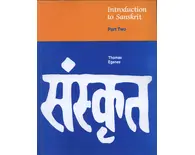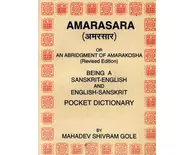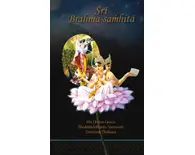Customers who bought this also bought
About this item
Why should one study Sanskrit?
There are several reasons to study the subtle and refined language of Sanskrit. The sound, script, grammar and systematic nature of the language are something of great beauty. The study of Sanskrit creates clarity within the mind, as Sanskrit is a highly systematic language, reflecting the orderliness of nature itself.
Most students who study Sanskrit also have an interest in the content of the Sanskrit literature. This large body of literature is enermously diverse, including such fields as philosophy, science, art, music, phonology, grammar, mathematics, architecture, history, education and logic (to name just a few). The literature can be understood in greater depth when it is studied in its original language.
Even a little Sanskrit will give you control over English translations of Sanskrit literature, so you will be able to decide if a crucial word has been mistranslated. While you may not become an expert translator of the Sanskrit literature, you'll find that an introductory knowledge of Sanskrit has great worth.
Vedic and Classical Sanskrit
Sanskrit means "perfected," or "put together" ("put," krta and "together," sam). Sanskrit is divided into two principal parts: Vedic Sanskrit and Classical Sanskrit. The older language is Vedic Sanskrit, or Vedic, the language of the Samhita and Brahmana. Vedic Sanskrit begins with Rk-Samhita. Classical Sanskrit, which includes several aspects, is the language of the Bhagavad Gita, Ramayana, and the rest of the Sanskrit literature.
This text focuses on Classical Sanskrit, although several quotations are in Vedic Sanskrit. Normally Vedic Sanskrit is studied after Classical Sanskrit is learned.
Features of this Text:
This text is written to fulfill a need that still remains, which is to make the introductory study of Sanskrit simple, concise and systematic, thereby making it more accessable and enjoyable for a beginning student. The text is not a complete survey of Sanskrit grammar, or even a primer. It is meant to be a "pre-primer," a step-by-step introduction to the fundemental aspects of the language.
Some features of this text are:
- Small, learnable steps
- Sequential organization
- A balance between alphabet, grammar and vocabulary in each lesson
- As few unecessary complications as possible
- Gradual integration of sandhi rules
After completing this text you should be able to study any of the more advanced Sanskrit textbooks more comfortably, or...
* Begin part II of Introduction to Sanskrit *
Reader's Review
This book is enough for people who want to learn Sanskrit from scratch to the advanced level quickly as is needed these days.
Have a question?
Customer Reviews
A fantastic way to start a Sanskrit education! I love the approach of this book!A fantastic way to start a Sanskrit education! I love the approach of this book!Read less
This is a shorter copy of what yogis had to memorize, and it is extremely interesting to just read. I know it will help my Sanskrit practice. Thank You!This is a shorter copy of what yogis had to memorize, and it is extremely interesting to just read. I know it will help my Sanskrit practice. Thank You!Read less
Great service, thank you and Hare Krishna! पूर्णम् अस्ति धन्यवद NormanGreat service, thank you and Hare Krishna! पूर्णम् अस्ति धन्यवद NormanRead less
Amarasara is a must-have book for anyone who wants to enhance his skills in Sanskrit. This is an established book in Sanskrit grammar and usage and teaches through examples. This book has an unusual w... Read more Amarasara is a must-have book for anyone who wants to enhance his skills in Sanskrit. This is an established book in Sanskrit grammar and usage and teaches through examples. This book has an unusual way of page numbering along with a small footprint that deceives the eye - this book is exhaustive and self contained. Cons: The book uses very cheap paper, which makes for obscured prints and twisted pages. Overall, five stars for the price and contents.Read less
A must for all Sanskrit translators (advanced or amateur). This is an abridged version of Amarakosh which once was the only Sanskrit thesaurus. This comes very close to the parent. The only cons I can... Read more A must for all Sanskrit translators (advanced or amateur). This is an abridged version of Amarakosh which once was the only Sanskrit thesaurus. This comes very close to the parent. The only cons I can think of is the arbitrary page numbering. I have to keep several bookmarks to figure out where I would want to return. Other than that, this is a very useful book. Of course, for the price, it is unbeatable.Read less




![Bhagavad Gita As It Is [1972, Complete Edition] Bhagavad Gita As It Is [1972, Complete Edition]](https://krishnastore.com/images/cache/BGC-195x155.webp)
![The Nectar of Devotion [1972 Edition] The Nectar of Devotion [1972 Edition]](https://krishnastore.com/images/cache/Nectar-of-Devotion-2018-cover-195x155.webp)



![Krsna, The Supreme Personality of Godhead [2 Volumes, 1970 (first) edition] Krsna, The Supreme Personality of Godhead [2 Volumes, 1970 (first) edition]](https://krishnastore.com/images/cache/Krsna-Book-2-Volume-New-Set-195x155.webp)



